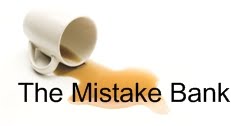What’s your rating? [note: Uber drivers are rated by passengers on a scale up to 5. Drivers with lower ratings get fewer assignments.]
Mine is 4.8. I think I lost some points when one woman felt I had not listened when she suggested I could take Olympic or Wilshire Boulevard to her destination, rather than get on the freeway. I didn’t realize her “suggestion” was actually her preference.
People who deal with customers need to have good listening skills. Driving someone around also involves your own competence - how much do you know the neighborhoods, routes, traffic, etc.? Successfully understanding when a customer's preference is firm, even if it's different from your recommendation, is a key skill, one that Evans has clearly learned here.
[Note that this brief analysis is already longer than the story itself. This is one of the magical powers of learning from mistake stories. There's a huge amount you can discuss and learn from any story, even a short one.]
